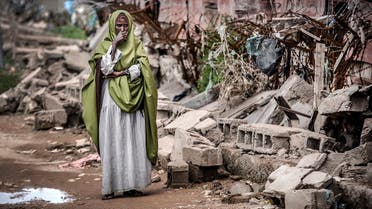
MOGADISHU, March 26 (NNN-XINHUA) — Flash floods caused by heavy rains have killed at least 14 people, displaced thousands more, and destroyed property in southern Somalia, the United Nations humanitarian agency said.
The UN Office for the Coordination of Humanitarian Affairs (OCHA) said lives were lost in the Bardhere district, Gedo region which has experienced the heaviest rainfall in recent days.
It said several areas of Somalia have received light to moderate rains over the past week, signaling an early start of the Gu (April-May-June) rainy season.
“Rainfall forecasts indicate a continuation of the rains in most parts of the country through March, but with drier than normal conditions towards the end of the season,” the OCHA said in its latest rainfall outlook for the 2023 Gu season released Thursday evening.
Humanitarian agencies have raised concerns over a likely deterioration of the living conditions, particularly for internally displaced persons (IDPs) living in overcrowded settlements with inadequate shelter.
According to the OCHA, heavy rains in Galmudug State in central Somalia caused flash flooding and cut off electricity in Adado and Dhusamareb towns Wednesday.
In Puntland State in northeastern Somalia, the floods also resulted in the loss of crops and livestock, as well as the destruction of infrastructure including businesses and residential houses, and IDP settlements, forcing displaced to reportedly move to higher grounds.
The rains also come at a time when aid agencies are struggling with a surge in disease outbreaks, including acute watery diarrhea/cholera, and measles cases, which the UN agency said, are likely to increase due to the risk of people consuming contaminated water and lack of adequate sanitation and hygiene facilities and services.
According to the Food and Agriculture Organization (FAO) of the United Nations Somalia Water and Land Information Management (FAO-SWALIM), there is a 50 percent likelihood of below-normal rainfall (drier than normal conditions), over most parts of Somalia but with high spatial variability or different performance across locations.
“This is likely to result in an unprecedented sixth below-average rainy season in Somalia, which – coupled with above-normal temperatures – will affect crops and pasture regeneration,” the OCHA warned.
The Gu season is the main wet season in Somalia and supports agriculture as well as replenishing water and pasture and this early onset will bring some relief to people affected by the prolonged drought, the UN agency said. — NNN-XINHUA




